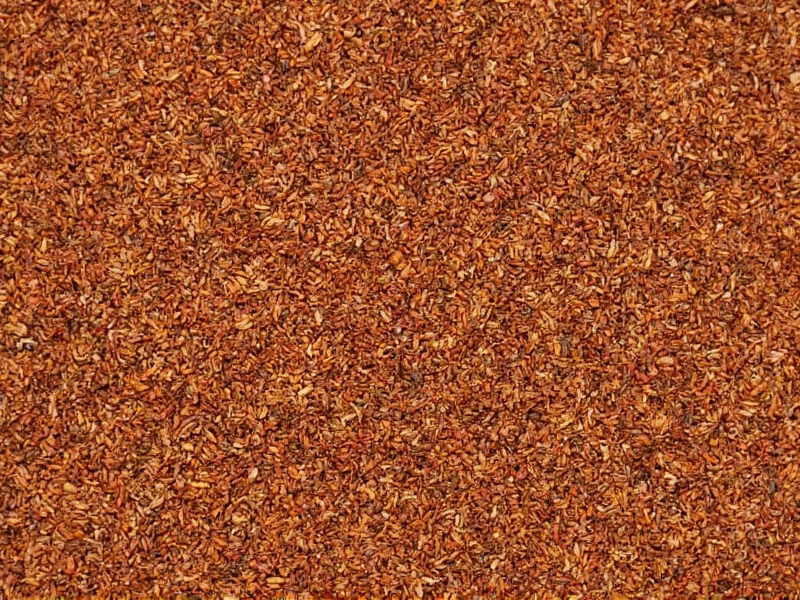Understanding what's in adobo seasoning is essential for both cooking enthusiasts and those exploring global cuisines. This versatile spice blend serves as the flavor foundation for countless dishes across Filipino and Latin American culinary traditions. While commercial blends provide convenience, knowing the core components helps you adjust recipes to your taste preferences or dietary needs.
Core Ingredients of Traditional Adobo Seasoning
Adobo seasoning's magic lies in its balanced combination of savory, earthy, and aromatic elements. The standard dry spice mix includes:
- Garlic powder – Provides the signature pungent base note
- Onion powder – Adds sweetness and depth
- Dried oregano – Contributes earthy, slightly bitter complexity
- Black pepper – Delivers subtle heat and sharpness
- Salt – Essential for flavor enhancement and preservation
- Turmeric – Primarily for golden color (sometimes substituted with annatto)
These components form the foundation of what spices are in adobo seasoning across most commercial and homemade versions. The precise ratios determine whether the blend leans toward Filipino or Latin American flavor profiles.
Regional Variations in Adobo Seasoning Ingredients
One of the most important aspects to understand about adobo seasoning components is how dramatically recipes differ by region. The term “adobo” refers to a cooking method rather than a single standardized spice mix.
| Region | Key Ingredients | Distinguishing Characteristics |
|---|---|---|
| Filipino | Vinegar, soy sauce, garlic, black pepper, bay leaves | Liquid-based marinade; tangy profile; often includes whole garlic cloves |
| Puerto Rican | Garlic powder, onion powder, oregano, cumin, salt, pepper | Dry rub; earthy flavor; often includes citrus juice when used |
| Mexican | Chili peppers, vinegar, spices, sometimes tomatoes | Can be sauce or dry rub; varies significantly by region in Mexico |
| Commercial (US) | Garlic, onion, oregano, turmeric, salt, black pepper | Standardized blend; often higher salt content; may include anti-caking agents |
What Gives Authentic Adobo Its Distinctive Flavor?
The difference between Filipino and Latin American adobo seasoning primarily comes down to liquid components versus dry spices. Filipino adobo relies on the chemical reaction between vinegar's acidity and soy sauce's umami, while Latin American versions build flavor through dry spice penetration.
When examining adobo seasoning ingredients list on commercial products, you'll often find additional components:
- Cumin – Common in Puerto Rican blends for earthy warmth
- Paprika – Adds mild sweetness and color
- Citrus elements – Dried orange peel or actual citrus juice in some recipes
- Annatto – Natural coloring agent providing reddish hue
- Anti-caking agents – Like silicon dioxide in commercial blends
Understanding what gives adobo seasoning its flavor helps you modify recipes. The garlic and onion powders provide immediate savory notes, while dried oregano develops more complex flavors when heated. Turmeric mainly affects color rather than taste, which explains why some homemade versions omit it.
Homemade vs. Store-Bought Adobo Seasoning
When comparing adobo seasoning salt content between homemade and commercial versions, the latter typically contains significantly more sodium. A typical store-bought blend might be 40-50% salt by weight, while homemade versions allow you to control sodium levels.
Creating your own blend answers the question of what's in adobo seasoning precisely, without additives. A basic homemade version requires just six ingredients:
- 3 tablespoons garlic powder
- 2 tablespoons onion powder
- 1 tablespoon dried oregano
- 1 tablespoon ground black pepper
- 1 tablespoon turmeric (optional for color)
- Salt to taste (start with 2 tablespoons)
Mix thoroughly and store in an airtight container. This simple recipe addresses common concerns about gluten-free adobo seasoning ingredients since all components are naturally gluten-free when pure.
Using Adobo Seasoning Effectively
Knowing the adobo seasoning components helps you use it properly. For meats, apply the dry rub at least 30 minutes before cooking to allow flavors to penetrate. When using in liquid-based Filipino adobo, add whole garlic cloves rather than powder for better texture and flavor release.
Be mindful of salt content when using commercial blends—many recipes calling for adobo seasoning assume you're using a high-salt commercial product, so you may need to reduce additional salt in your dish. This consideration is especially important for those monitoring sodium intake.
Common Substitutions
If you're out of adobo seasoning or need to accommodate dietary restrictions, understanding what spices are in adobo seasoning helps with substitutions:
- No garlic? Use asafoetida (hing) sparingly for similar savory notes
- Reducing sodium? Omit salt and increase other spices proportionally
- Missing oregano? Marjoram or thyme can provide similar herbal notes
- Wanting less color? Omit turmeric without significantly affecting flavor
These substitutions maintain the essential character of what gives adobo seasoning its distinctive profile while accommodating specific needs.











 浙公网安备
33010002000092号
浙公网安备
33010002000092号 浙B2-20120091-4
浙B2-20120091-4